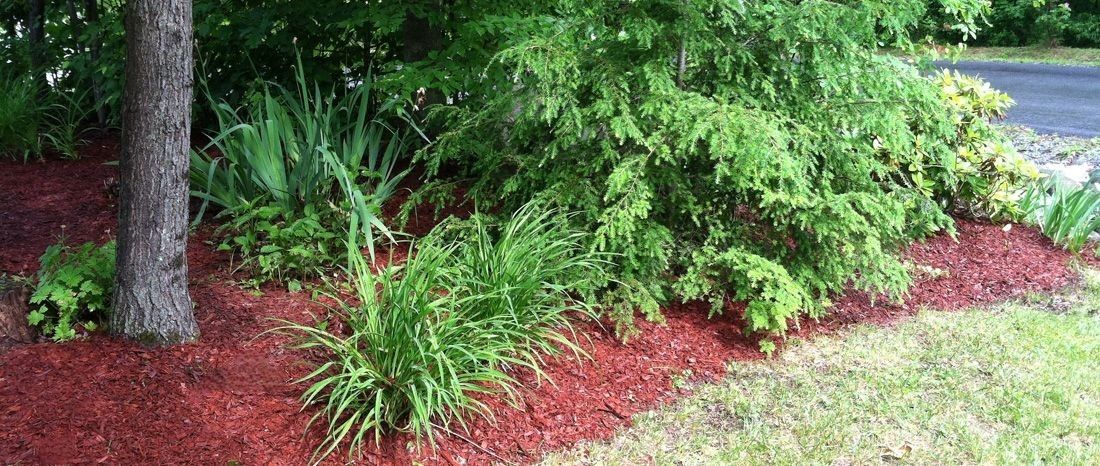Save Water and Your Trees with Proper Mulching Techniques
Save water and your trees with proper mulching, a crucial practice that offers numerous benefits to the environment and your landscape. By applying mulch around the base of your trees, you can retain moisture in sandy soil, reduce evaporation rates, and prevent erosion.
In this blog post, we will explore the various advantages of mulching, discuss different types of mulch suitable for particular uses, and discuss how to apply it to conserve water while promoting tree health effectively.
We will also share valuable tips on effectively applying mulch to maximize its potential to conserve precious moisture. Learn how proper mulching techniques can save time and resources by reducing watering frequency without compromising the vitality of your trees.

Mulching Basics
Proper mulching is essential for maintaining the health and longevity of your trees. Mulch serves multiple purposes, such as conserving water, regulating soil temperature, suppressing weeds, and providing nutrients to the tree roots. Mulching is essential for trees as it helps conserve water, which we will discuss in more detail below.
Why Mulch Matters
Mulch provides a protective layer around the base of your trees that helps keep moisture in the soil by reducing evaporation. It saves water and ensures your trees receive adequate hydration during dry periods or droughts. Additionally, mulch is an insulator against extreme temperatures - keeping tree roots cool in the summer heat and warm during the winter months.
Water Conservation Benefits
- Reduced Evaporation: A well-mulched area can reduce evaporation rates by up to 50%, meaning less frequent watering is needed.
- Weed Suppression: By inhibiting weed growth near your tree's root zone, you eliminate competition for valuable water resources.
- Infiltration Improvement: Organic mulches improve soil structure over time through decomposition; this leads to better infiltration rates when watering or during rainfall events.
Mulching is a vital element of tending to trees, as it aids in preserving soil moisture and shielding the roots from extreme temperatures. With this knowledge in mind, let's explore the different types of mulch available for use around trees.
Types of Mulch
Mulching your trees is essential for their health and water conservation. However, selecting the appropriate mulch is critical to ensure optimal advantages for your trees. There are two types of mulch:
Organic Mulches
Wood Chips: One popular option is wood chips, which decompose slowly, adding nutrients to the soil while conserving moisture. You can get wood chips from tree service companies or purchase them at garden centers.
- Bark Nuggets: Bark nuggets come in various sizes and types, such as pine or cedar bark. They offer similar benefits as wood chips but may need to be replaced more frequently due to faster decomposition.
- Leaves & Grass Clippings: These readily available materials can be a cost-effective mulching solution when properly composted first. Leaves should be shredded before use to prevent matting, while grass clippings must not contain herbicides or pesticides.
Inorganic Mulches
In contrast with organic options, inorganic mulches do not decompose over time nor add nutrients back into the soil; however, they still help conserve water by reducing evaporation rates around tree roots. Some common examples include:
- River Rock / Gravel: This low-maintenance option provides excellent weed control and lasts indefinitely without needing replacement; however, it does not insulate the soil as effectively as organic mulches.
- Rubber Mulch: Made from recycled tires, rubber mulch is durable and provides reasonable weed control. However, there may be better choices for trees, as rubber could leach chemicals into the soil.
When selecting a type of mulch for your trees, consider availability, cost, appearance, and how well it meets your tree's specific needs regarding water conservation and overall health. Mulching is fundamental to tree maintenance, so picking the ideal kind for your trees is critical.
Proper mulching is crucial for the health and water conservation of your trees. When choosing mulch, consider factors such as availability, cost, appearance, and how well it meets your tree's specific needs.
Mulching Tips
Proper mulching is essential for the health and growth of your trees. Mulching is vital for a tree's well-being, saving water and helping regulate the soil temperature, thwarting weed growth, and giving essential nourishment to its roots. Here are some tips on how to properly mulch your trees:
- Choose the correct type of mulch: Organic mulches like wood chips or shredded bark are the best for trees as they decompose over time and provide a lot of nutrients to the soil.
- Apply the correct amount: Apply a layer of 2-4 inches (5-10 cm) thick around the base of your tree. Too much mulch can cause root rot or suffocate tree roots, while too little may not provide adequate benefits.
- Avoid volcano-mulching: This refers to piling up mulch against the trunk of a tree which can lead to moisture retention causing decay or disease. Instead, leave a few inches gap from the trunk and start applying from there, forming a doughnut shape around it.
- Maintain consistency: Periodically, check if you need more or less coverage based on decomposition rates; reapply when necessary, ensuring an even distribution throughout.
These steps will ensure you're effectively conserving water while promoting healthy growth for your trees using mulch. To learn more about how to mulch your trees, check out this great video by the Arbor Day Foundation. We are always here for you if you need professional assistance in selecting appropriate materials and application techniques tailored to your property's needs.
FAQs: How to Save Water and Your Trees With Proper Mulching
Does Mulching Help Conserve Water?
Yes, mulching helps conserve water by reducing evaporation from the soil surface. It also prevents weed growth that competes with trees for moisture and nutrients. By maintaining a consistent soil temperature, mulch promotes healthy root development and overall tree health.
What Is the Best Mulch for Water Saving?
Organic mulches such as wood chips, shredded bark, or compost are ideal for conserving water. These materials hold moisture effectively while allowing rainwater to penetrate the soil easily. They also break down over time, improving soil structure and nutrient content.
What Is Proper Mulching for Trees?
- Select an appropriate organic material like wood chips or shredded bark.
- Create a circle around the tree trunk at least 2-4 feet in diameter.
- Maintain a depth of about 2-4 inches of mulch within this area.
- Avoid piling up too much against the trunk; keep it several inches away to prevent rotting issues.
Conclusion
By applying mulch around the base of your trees, you can retain moisture in sandy soil, reduce evaporation, prevent erosion, and save time on watering. Different types of mulch, such as organic and inorganic materials, benefit tree health and water conservation. Properly applied mulch will help save water for your trees while adding nutrients to the soil.
Do you need help with mulching, choosing which mulch to use, or anything else tree-related? We provide professional tree care solutions for residential homeowners and commercial businesses in Abbotsford and the neighboring communities.

